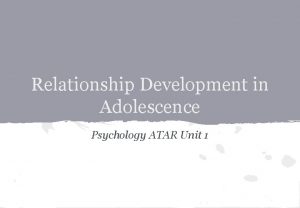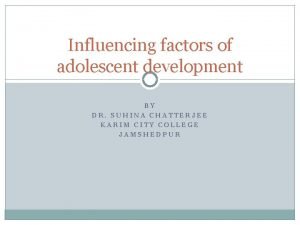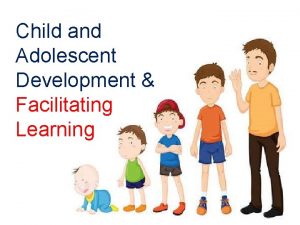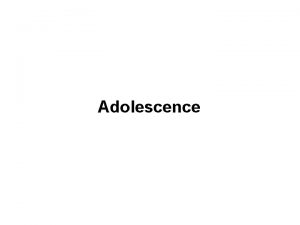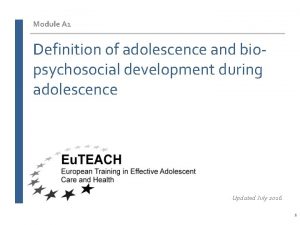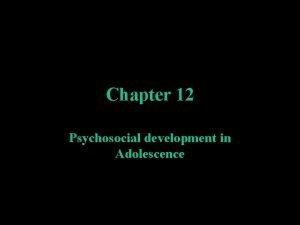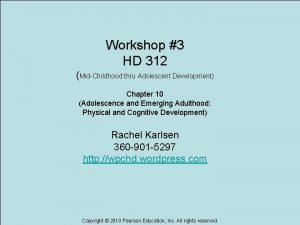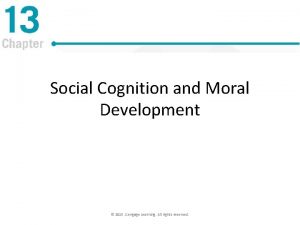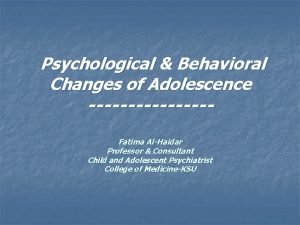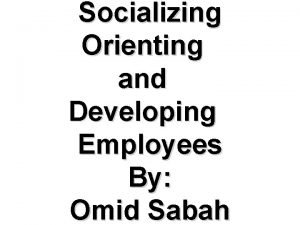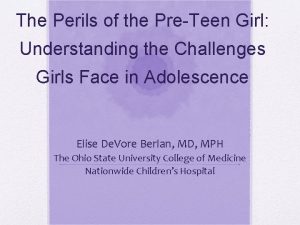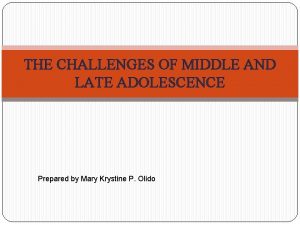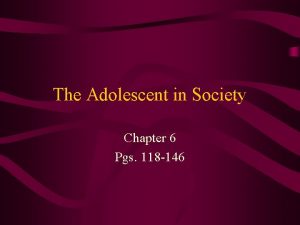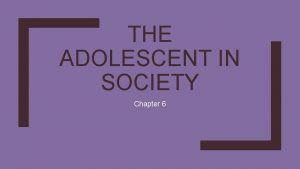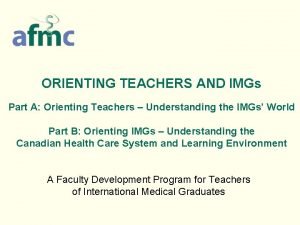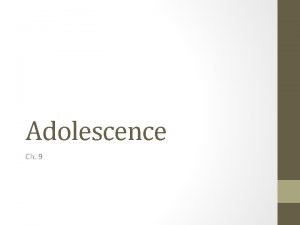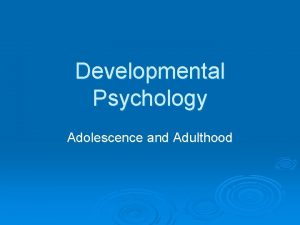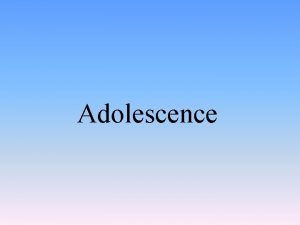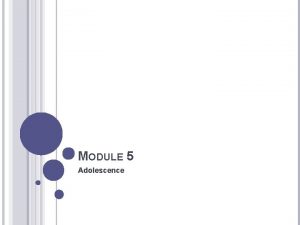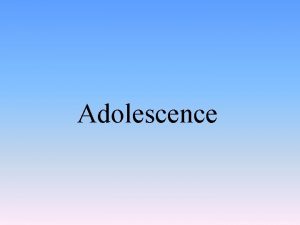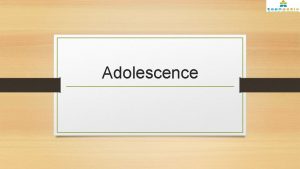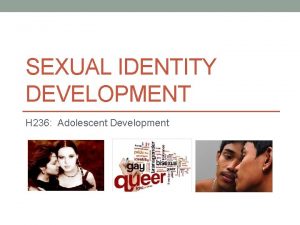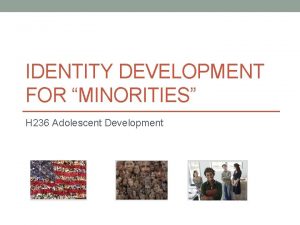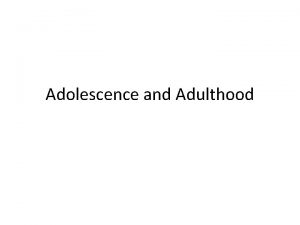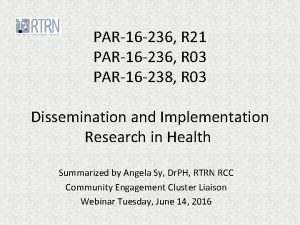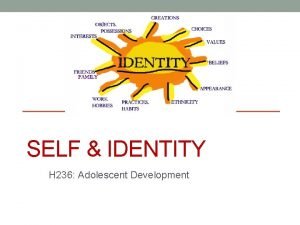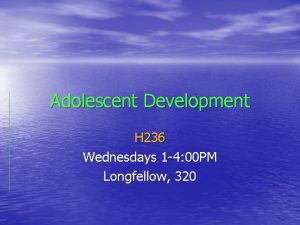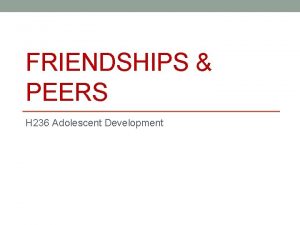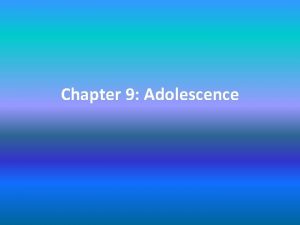ORIENTING CONCEPTS OF ADOLESCENCE H 236 Adolescent Development





















- Slides: 21

ORIENTING CONCEPTS OF ADOLESCENCE H 236: Adolescent Development

Announcements • Introduction of TFs • Office Hours • Feedback and feelings about Perusall • 3 “byes” over the course of the semester • Mini-Lectures and Self-Quiz, now online • Click quizzes on the left side of Canvas site • THEN watch mini-lectures that match your needs • Today, time is set aside during the second half of class to watch videos

Some orienting concepts: The plan • What do we think of adolescents and how do well do we know them? • Brief history of adolescence as a developmental stage • How universal is adolescence and its how universal do we need/want it to be? • If adolescence is a transition, what are adolescents supposed be doing/achieving during this “transition? ”

Word cloud from our impressions of adolescence… to be revisited at end of class

Descriptions across time • …a related adolescent desire is argument for argument’s sake. In their enthusiasm they will leave no stone unturned, and in their delight over the first taste of wisdom they will annoy everyone with their arguments • Plato • The young are in character prone to desire and ready to carry any desire they may have formed into action. Of bodily desires it is the sexual to which they are most disposed to give way, and in regard to sexual desire they exercise no self-restraint. • Aristotle

• “They are abandoned to joy, grief, passion, fear, and rage. They are bashful, show off, weep, laugh, desire, are curious, eager, regret, and swell with passion. There is color in their souls brilliant, livid, loud. ” • G. Stanley Hall • “in the teens, she almost always learns to control the more violent physical outbreaks but may…use her tongue in place of her fists” • G. Stanley Hall

• “The adolescent stage has long seemed to me one of the most fascinating of all themes. These years are the best decade of life…It is a state from which some of the bad, but far more of the good qualities of life and mind arise. ” Hall (1904)

How accurate are we… • About adolescents’ emotional life?

How accurate are we… • About adolescents’ family life?

How accurate are we… • About adolescents’ beliefs about their vocational and educational goals?

Early evidence and Conceptualizations of Adolescence • Plato—acknowledge ages from 14 to 21 as unique because of the capacity to reason • Allows for the study of science and math • Ages 7 -14 --education should focus on music and sports • Ages 0 -7—the mind is too undeveloped to learn much(!)

Aristotle Fusion of Mental & Physical Worlds • To think & reason is distinctly human! • 3 Layers to “soul-life” -- biological & evolutionary point of view 1. 2. Lowest layer (plant)—nourishment and reproduction Second level (animal)—adding sensation, perception, and locomotion Third (distinctly human)—to think and reason. Adolescence is distinguished by these abilities 3. “Drives” direct development in early stages – to think and reason drive development into adolescence

“Modern” conceptualizations of Adolescence • G. Stanley Hall (1844 -1924) • In his context • Psychology as a field was splitting from philosophy & theology • Just 20 years since “Origins of the Species” • Paradigm shift in the study of humans scientifically • US Changing from agrarian to industrial economy (growing urban centers) • Child Labor laws & Compulsory schooling laws • First Ph. D in Psychology in US (1879) • Trained by William James (here at Harvard) • Started American Psychological Association (1892)

G. Stanley Hall (1844 -1924) • Seminal Work— • “Adolescence: Its psychology and its relations to physiology, anthropology, sociology, sex, crime & religion” (1904) • 2 volume set 1439 pages!! • Developed child questionnaire method • Trained 30 of 54 Psychology Doctoral Students (through 1898)

G. Stanley Hall (1844 -1924) • Risky Behavior • Increased Crime • Sensation seeking • Media Usage to “stir feelings’ • Sturm und drang--Storm and Stress – upheaval and disorder is a normal part of adolescent development • Vacillations between contradictions • From solitude/sullenness to primacy of friendships • From sensitivity to callousness • From high energy to lethargy • From joyful/happiness to depression

• “…some day psychology will be able to give us, in place of the crude phenomenologies and abstract constructions of the history of philosophy of Hegel to our day, a true genetic, natural history of normal stages in human development, using systems as human documents. ” • G. Stanley Hall (1904; Vol. 2. p. 51)

Universal in its “uniqueness” • It’s not just *more* of childhood, but qualitatively different • “The consciousness of childhood is molted, and a new, larger, better consciousness must be developed, or increased exposure to vulnerability will bring deterioration. ” • Differences marked by • Rites of passage • Greater responsibility • Reproductive readiness • What about universality vs. cultural specificity and individual differences. • Where do we feel comfortable drawing inferences and speaking in trends? • https: //app. perusall. com/courses/h 236 adolescent_development/brown_2002_120? annotation. Id=vg. SGi. Eqp. Fs. AXGb. DCm

What is the purpose of adolescence? • Is it a “transition from childhood to adulthood? • Why is such a transition needed? • What should happen during this transitional period? • “While it's absolutely true that changes from a manufacturing to service economy have changed adolescents' experiences, I think it's important to situate this discussion within larger historical context. Before the explosion of manufacturing, in agricultural economies, most adolescents worked to support their families; the "useless" adolescent is a relatively new phenomenon (I give credit to Zelizer's Pricing the Priceless Child for these ideas). How does this influence our interpretation…? ”– Anina

If Adolescence is a transition… • What is its purpose? • Discuss at your table… • Post class note: The next slide shows the responses from each of the groups. I did a little quick coding for commonalities in the purpose, how, and what teens need. See color legend in the upper right hand corner. Prof. Hill

What is our modern purpose of adolescence? Legend: Purpose of the stage How to do it/process What they need • The modern purpose of adolescence is to form one's identity, ideally with a positive, experimental approach. The variation in adolescence across cultures and times, however, makes it difficult to identify a single set purpose for adolescence. • Trying-out or exploring the rules. Discovering your identity and finding a purpose. • - Not a disease – It’s a stage, a transition. - Physiological transitions need structure and support. - We need to shift our cultural perspective into a more balance and understanding. - Purpose – to find out who you are, and start asking the biggest questions • To explore the social, biological, and personal identity realms of existence in a way that helps the adolescent establish his or her own future character and path with greater levels of responsibility than in previous stages of development. • Period of life where individuals explore and define the role they envision for themselves in their society. • Adolescence is a period of experimentation and self-discovery. • Prepare for adulthood: self-sufficiency, productive relationships with others, understanding your identity, strong moral compass • It is a time of assuming or developing greater social independence and responsibility.

• Adolescents are “chronological hostages of a time warp between biological and social age” (Moffitt, 1993, p. 687) • “One may be in all respects better or worse, but can never be the same. ” Hall
 Dexter dunphy 5 stages
Dexter dunphy 5 stages What factors influence adolescent development
What factors influence adolescent development Child and adolescent development and facilitating learning
Child and adolescent development and facilitating learning Physical development in adolescence
Physical development in adolescence Eulogos pagina 236 numero 6
Eulogos pagina 236 numero 6 9
9 What is 75 rounded to the nearest ten
What is 75 rounded to the nearest ten Conalep ixtapaluca
Conalep ixtapaluca Deborah milbauer northeastern
Deborah milbauer northeastern Moral development in adolescence
Moral development in adolescence Late adolescence
Late adolescence Psychosocial development in adolescence
Psychosocial development in adolescence Moral development in adolescence
Moral development in adolescence Moral development in adolescence
Moral development in adolescence Emotional development in adolescence
Emotional development in adolescence A nurse preceptor is orienting
A nurse preceptor is orienting Socializing orienting and developing employees
Socializing orienting and developing employees Pre adolescent girl
Pre adolescent girl 3 filipino adolescent heroes
3 filipino adolescent heroes Undefined status adolescence
Undefined status adolescence Developmental tasks for adolescent
Developmental tasks for adolescent Difference between dating and courting
Difference between dating and courting
